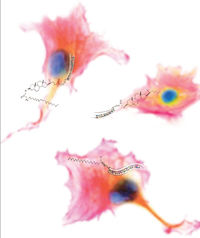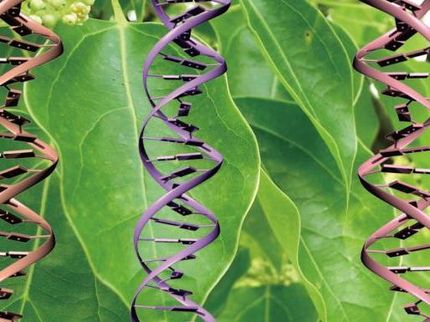New Clues to How Sex Evolves
Advertisement
Sex is a boon to evolution; it allows genetic material from parents to recombine, giving rise to a unique new genome. But how did sex itself evolve? Researchers at the Department of Energy's Lawrence Berkeley National Laboratory and the University of California at Berkeley have found clues to one part of this complex question in ongoing studies of the nematode Caenorhabditis elegans.
Abby Dernburg, of Berkeley Lab's Life Sciences Division and UC Berkeley's Department of Molecular and Cell Biology, working with graduate student Carolyn Phillips, has identified a key family of genes and proteins that help bring C. elegans chromosomes together during meiosis. This specialized cell division produces gametes, or sex cells, each of which has only one copy of each chromosome instead of the two copies most cells carry. Last year Dernburg, Phillips, and their colleagues identified the function of a C. elegans protein called HIM-8. This protein binds to and helps bring together copies of the worm's sex chromosome (the X chromosome) to achieve stable pairing, called synapsis. Now Dernburg and Phillips have found three new genes, which they have named zim-1, zim-2, and zim-3, that perform the same functions for the worm's five additional chromosomes. Their results are published in 'Developmental Cell'.
All four of these genes code for different but highly related "zinc-finger" proteins, proteins that usually recognize specific sequences of DNA. Each protein acts to pair and link together one or two specific chromosomes among C. elegans's full set of six. The him and zim genes appear in tandem on a single chromosome, which raises the question of how they evolved.
"There are many families of zinc-finger proteins involved in DNA transcription, all very rapidly evolving," says Dernburg. "Gene duplication is common throughout the genome in all species, but unless a duplicated gene quickly acquires a new function, it is not likely to be conserved. The group of related zinc-finger protein genes in C. elegans offers an opportunity to address the question of how and why new zinc-finger proteins acquire new functions."
Dernburg and Phillips applied "reverse genetics" to the neighboring genes, obtaining worms from the Japanese National Bioresource in which each of the three new genes had been specifically deleted. By observing meiosis (and its failures) in these knock-out worms, it was clear that one of the new genes was responsible for successful pairing of the nonsex chromosomes II and III, one was responsible for pairing of chromosome V, and the third for chromosomes I and IV.
The researchers were able to visually detect the zinc-finger proteins during meiosis and show that each protein binds specifically to the chromosomes they help to pair. Further tracking showed that during meiosis HIM-8 and the ZIM proteins on each chromosome latch onto the cell's nuclear envelope. This activity is reminiscent of the way chromosomes attach to the nuclear envelope during meiosis in other organisms.
"In most eukaryotic species - plants, mammals, fungi, and so on - the telomeres on the ends of the chromosomes anchor to the nuclear membrane in a transient structure called a 'meiotic bouquet,'" Dernburg says. "In C. elegans it's the Pairing Centers, not telomeres, that attach to the nuclear envelope. They do so seemingly randomly, not in a single bunch; nevertheless, the association with the nuclear envelope seems to serve a similar function, which is to stabilize chromosome interactions during pairing."
Exactly how, Dernburg says, is still unknown. "Zinc-finger proteins evolve rapidly because they are modular, so that combinations of elements allow them to move quickly to new binding sites on DNA, making the Pairing Centers of different chromosomes unique," she says. "Telomeres, on the other hand, are all very much alike, no matter which chromosome they're on. It could be that C. elegans, which is hermaphroditic and grows to maturity in only three days, is under a lot of competitive pressure to reproduce quickly, and that different binding sites on different Pairing Centers makes for faster chromosome pairing and thus faster reproduction - unlike organisms that need to find a mate before they can reproduce, and mature more slowly."
The question remains whether new binding sites or new forms of zinc-finger protein lead rapid evolution in the worms. And there are other questions: in C. elegans, and also C. remanei, there are only four kinds of ZIM proteins that serve to initiate the pairing of six different chromosomes (in C. briggsae, only five proteins for six chromosomes), "so there must be more at work in helping the chromosomes that share the same ZIM figure out what's their proper partner," says Dernburg.



























































